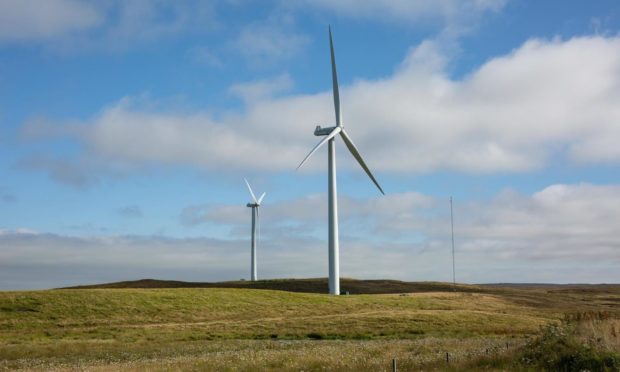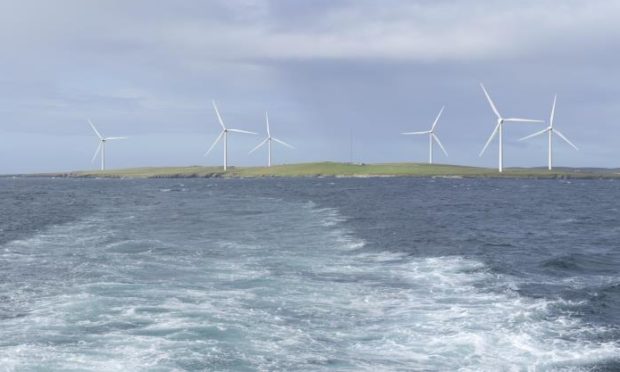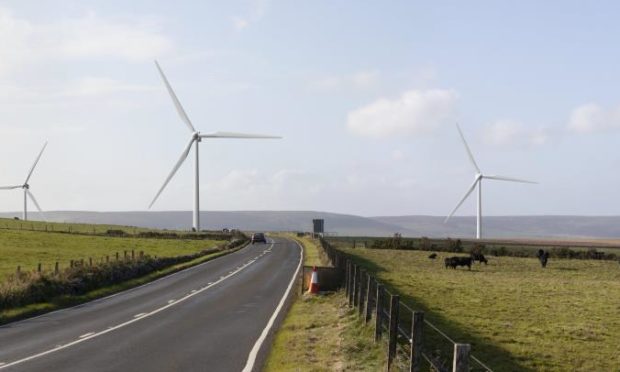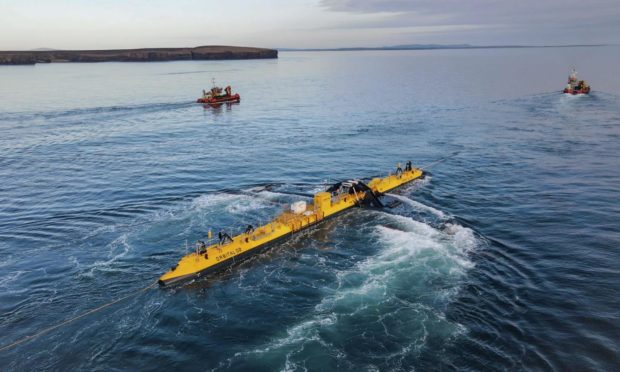A proposed electricity transmission link between Orkney and the mainland could be worth more than £800 annually for each islander over the next 45 years.
A new independent report reveals the cable and renewable energy developments would boost economic activity in the islands by between £371 million and £807 million.
That equates to an average annual benefit to each of Orkney’s 11,261 households of between £730 and £1,591 – or £371 to £807 a year per person.
The research was commissioned by Orkney Islands Council which says it “unequivocally demonstrates” the important of a new interconnector to Orkney’s economic future.
The islands are currently connected to the mainland by two subsea cables with a capacity of around 40MW.
This is seen as hampering generation growth with the distribution network operating at full capacity.
‘A significant contribution to carbon emissions targets’
Ofgem has conditionally approved the case for the new 220MW cable, which would run from near Dounreay, Caithness to near Warbeth, Orkney, linked by underground cable to a new substation near Finstown.
The interconnector would make a significant contribution to meeting national net-zero carbon emissions targets.
However, it requires 135MW of new projects to trigger its go-ahead.
The islands currently have three consented projects – with a combined capacity of 45MW – at Costa Head, Hesta Head and the Hammars Hill extension.
Orkney’s Community Wind Farm Project, which involves three council-owned windfarm developments totalling 86.4MW, is regarded as being vital towards meeting the target.
It includes three 28.8MW, six turbine, windfarm developments at Quanterness in St Ola, at Wee Fea in Hoy and on Faray in the North Isles.
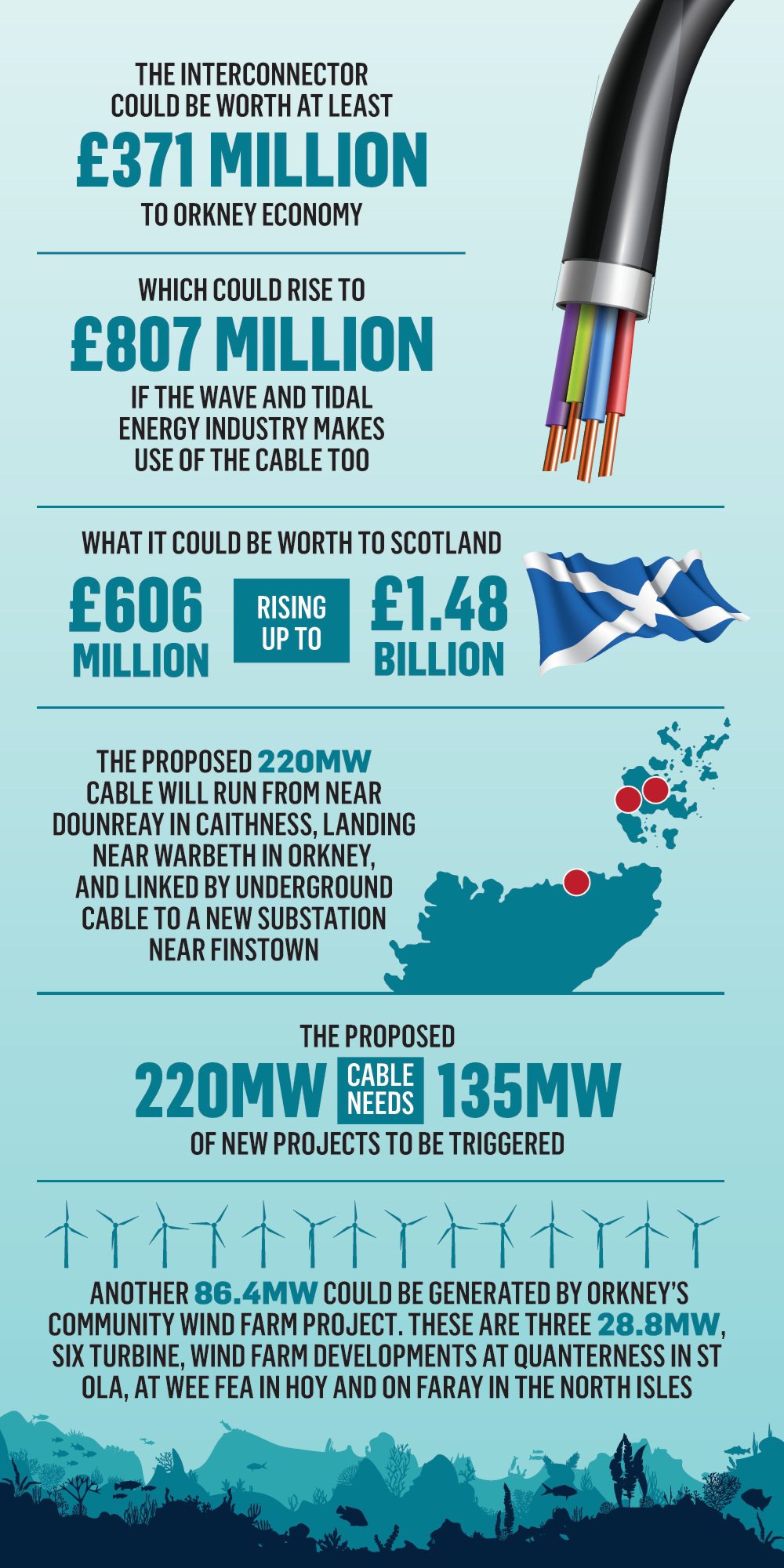 Planning applications for Quanterness and Hoy are with the Scottish Government for determination and plans for Faray are due to be submitted next month.
Planning applications for Quanterness and Hoy are with the Scottish Government for determination and plans for Faray are due to be submitted next month.
The projects could also each provide an estimated annual payment of £144,000 into a community benefit fund to support local projects.
£1.5 billion boost to the Scottish economy
The report, by economic advisers GHD, determined the gross value added (GVA) – the measure of the value of goods and services produced in an area, industry or sector – to the Orkney economy of an interconnector over a 45-year period.
This includes direct and indirect jobs and wages from renewables projects, as well as employment generated from greater demand and spending on goods and services.
It said the link could be worth a minimum of £371 million, assuming 135MW of projects are developed to meet Ofgem’s conditions, including the three council projects.
This would rise to £807 million with long-term renewable growth of 300MW, if the wave and tidal energy industry also makes use of the cable.
The impact of the transmission link to the wider Scottish economy and the renewables it supports ranges from £606 million to almost £1.5 billion.
The report says the council projects are critical to meeting Ofgem’s threshold to ensure the transmission link is approved.
Without the council’s projects the cable will not happen.”
John Mundell
It warns that if the threshold of 135MW is not met, Ofgem may require a new submission that could result in a lower capacity link.
That would significantly reduce the long-term potential of renewable development in Orkney.
John Mundell, interim chief executive of Orkney Islands Council, said: “The findings of this independent economic report unequivocally demonstrate just how important a transmission link is to Orkney’s economic future.
“Not only in bringing much-needed income to the county but also in retaining and securing high-value jobs – giving us great hope as we look to stabilise Orkney’s economy post-Covid.
“The report also shows just how important the council’s own proposed projects are to securing the cable – without the council’s projects, to be frank, the cable will not happen.”
‘Orkney at the heart of a green future’
Claire Mack, chief executive of Scottish Renewables, said the report clearly demonstrates the benefits improving network infrastructure can bring to Scotland’s economy, remote communities and the fight against climate change.
She said: “Reaching our net-zero climate ambitions is going to require a significant increase in deployment of renewable energy technologies, many of which will be located is some of Scotland’s most remote regions.
“Renewable energy projects not only help reduce Scotland’s carbon emissions but also bring billions of pounds of investment and significant socio-economic benefits to the communities in which they are located, particularly through new skilled employment opportunities.”
Matthew Finn, commercial director of the European Marine Energy Centre (EMEC), the Orkney-based test and research base for wave and tidal power, also welcomed the findings.
He said: “Importantly for EMEC it shows the enabling role that the link will have in providing a route to market for our world-leading marine energy industry, unlocking the full potential of an industry which has the potential to set Orkney and Scotland at the very heart of a clean green future.”
Last month, an Orkney firm has successfully launched the world’s most powerful tidal turbine.
Orbital Marine Power’s 2MW O2 machine will undergo tests at EMEC.
